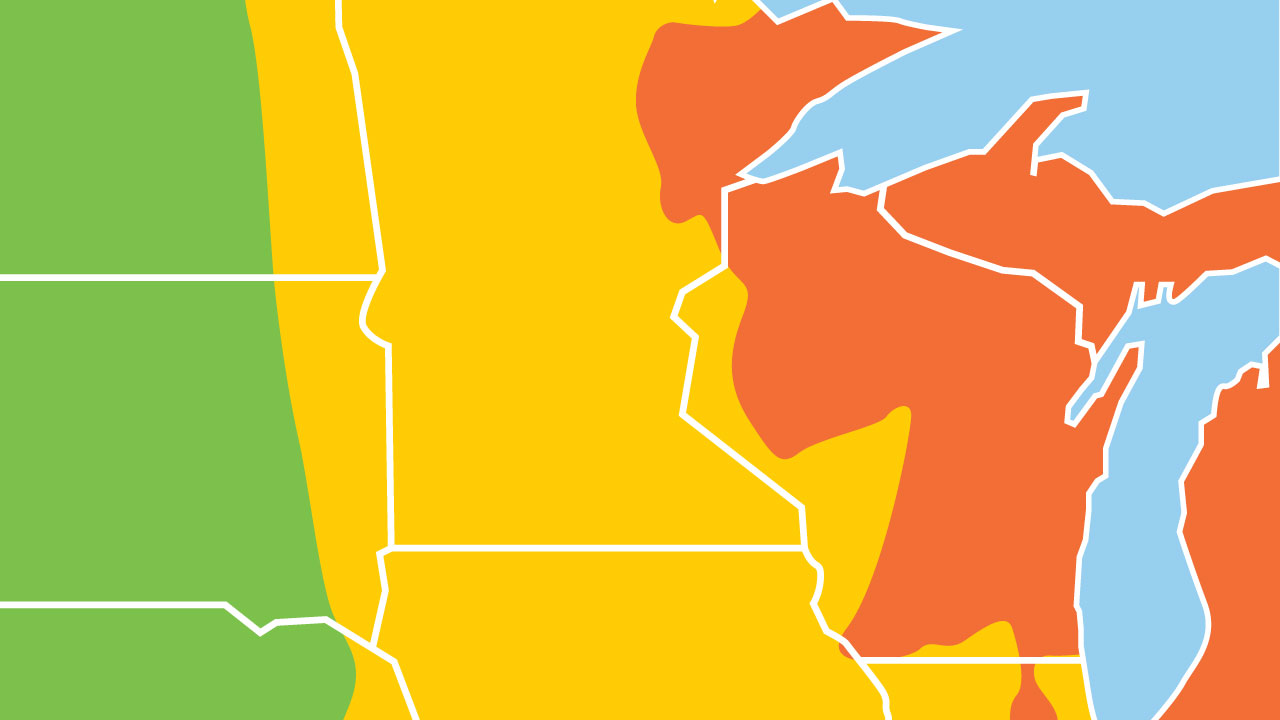Key takeaways:
- Minnesota has endured one of its longest statewide air quality alerts, with Minneapolis ranking among the world’s most polluted cities during peak smoke days.
- PM₂.₅ particles inflame nasal passages and worsen allergies, congestion, and sleep quality.
- ADVENT’s in-office procedures and immunotherapy options help Minnesotans reduce smoke-triggered symptoms and improve airway defense.
In Minnesota, we’re no strangers to tough weather, but this summer, it’s the air itself that’s turning against us. Smoke from Canadian wildfires has settled over the Twin Cities and beyond, disrupting daily routines, worsening sinus issues, and turning sleep into a struggle for thousands.
Just days ago, Minneapolis ranked among the top five most polluted cities globally, with air quality reaching AQI levels above 100, according to FOX 9 Minneapolis-St. Paul and Minnesota Pollution Control Agency (MPCA). An extended statewide air quality alert, one of the longest on record, remained in effect as smoke from Canadian wildfires settled over the entire state, from urban neighborhoods in St. Paul to suburban areas like Maple Grove and Eagan. The smoke isn’t just lingering in the sky. It’s settling into our daily routines, affecting how we breathe, sleep, and feel throughout the day.
Why the Smoke Hits Harder in Minnesota
Minnesota’s geography makes us especially vulnerable to smoke drift. Our position along the northern border means we’re often first in line when wildfires rage in Canada. But it’s not just location, our local environment makes the impact worse:
- Bowl-shaped topography in parts of Eagan and southern St. Paul traps smoke close to the ground
- Stagnant summer weather patterns keep polluted air from moving on
- Heavy vehicle traffic on I-94, I-35W, and I-494 adds to the particle load
- And Minnesotans love the outdoors. From Chain of Lakes bike paths to Woodbury running trails, we're outside even when the air isn’t ideal
This combination means more daily exposure to wildfire smoke, even for people who don’t typically struggle with breathing issues.
What Wildfire Smoke Does to Your Nose and Sinuses
Wildfire smoke contains PM₂.₅ particles, which are microscopic pollutants that lodge deep into the nasal passages, sinuses, and lungs. These particles can inflame nasal passages and trigger congestion or coughing. For people with chronic nasal congestion, allergies, or structural airway blockages, this makes already-inflamed tissue even more reactive.
Many Twin Cities residents have experienced:
- Sinus headaches or pressure that lingers all day
- Difficulty breathing or shortness of breath
- Dry mouth from mouth breathing
- Post-nasal drip and sore throat
- Runny nose or nasal congestion
- Disrupted sleep due to nighttime congestion or snoring
- Itchiness around the eyes
When your nose is blocked, it can’t filter out fine particles, and once they reach your lungs or bloodstream, they can cause bigger problems.
How to Protect Your Airway From Wildfire Smoke
Even indoors, you’re not immune from smoke exposure, especially if your nasal passages aren’t doing their job. Here’s how to minimize your risk while the smoke lingers:
- Use saline nasal rinses daily to flush out irritants
- Run a HEPA air purifier, particularly in your bedroom
- Keep windows shut, even on cooler evenings when the breeze feels tempting
- Upgrade your HVAC filters to MERV-13 or higher
- Avoid outdoor workouts or errands during high AQI days (check AirNow.gov or MPCA’s local updates)
- Track your symptoms, like facial pressure, blocked breathing, or poor sleep. They’re signs your airway needs attention
According to the MPCA, even healthy individuals are experiencing symptoms this summer, but those with nasal obstruction or airway issues feel the effects more intensely and more often.
How ADVENT Helps You Breathe Well
At ADVENT, we focus on the nose because healthy breathing starts with a nose that works. If you’re constantly congested, struggling to sleep, or finding it harder to breathe during poor air quality days, you may be dealing with a chronic nasal blockage that’s been made worse by wildfire smoke. Our office-based treatments, like balloon sinuplasty or turbinate reduction, can help restore your ability to breathe through your nose and give your body its first line of defense back. If you're already dealing with allergies or sinus issues, we offer immunotherapy, which can help minimize the impact of poor air quality.
Schedule an appointment at an ADVENT clinic in Minnesota. Let’s make sure your airway is ready no matter what’s blowing in from the north.
References
Apgar R. (2025). Personal interview.
Associated Press. (2025, August 1-2). Smoke from Canadian wildfires brings unhealthy air to large swaths of the Midwest. https://apnews.com/article/canada-wildfires-smoke-minnesota-midwest-ec9aff3eb3f76cf115c3737d8b1d515b
Cleland P. (2025). Personal interview.
FOX 9 Minneapolis-St. Paul. (2025, August 1). Minnesota, Wisconsin air quality alert extended through noon Monday. https://www.fox9.com/news/minnesota-air-quality-august-1-2025
Minnesota Pollution Control Agency. (2025, August 1). Air quality alert issued due to wildfire smoke for Tuesday, July 29, through Monday, Aug. 4, for all of Minnesota. https://www.pca.state.mn.us/news-and-stories/air-quality-alert-issued-due-to-wildfire-smoke-for-tuesday-july-29-through-monday-aug-4-for-all-of


